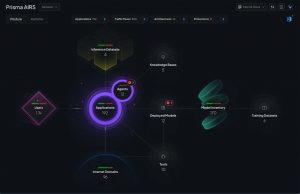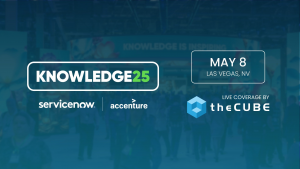Intel Can’t Win in Mobile, but the Data Center Could Be a Savior
![]() As we settle into 2013 we’re now in a space where the computing market is growing with ultrabooks, tablets and other chip-powered gadgets. Although Intel is still the undisputed king of the high end chip markets, it’s become unavoidably evident that lower cost, ARM-based processors are dominating mobile devices like tablets and smartphones. As PCs lose out to the tablet era, Intel finds itself face-to-face with the necessity of adapting to a new market.
As we settle into 2013 we’re now in a space where the computing market is growing with ultrabooks, tablets and other chip-powered gadgets. Although Intel is still the undisputed king of the high end chip markets, it’s become unavoidably evident that lower cost, ARM-based processors are dominating mobile devices like tablets and smartphones. As PCs lose out to the tablet era, Intel finds itself face-to-face with the necessity of adapting to a new market.
Semiconductor giant Intel delivered improved fourth quarter results earlier this month, reporting revenue of $53.3 billion for 2012, down 1.2 percent compared with 2011, and posted net income of $11 billion, down 15 percent. The PC client division, which accounts for more than half of all Intel’s revenue, fell 3 percent year-over-year.
Fierce competition
.
Intel management has conceded that tablets are impacting PC sales with mobility becoming the top priority for consumers, even in emerging markets. Intel had hoped the PC market could be revived with the arrival of the ultrabook, but the new category of ultra-thin laptops, designed to compete with Apple’s MacBook Air has had trouble of its own, despite the rollout of Windows 8.
![]() Intel’s PC client problem lies in the declining market for PCs, and the rise in popularity of tablet computers, where it faces much stronger competition from ARM in particular. Gartner reported PC shipments fell 5 percent in the last three months compared to the same period of 2011.
Intel’s PC client problem lies in the declining market for PCs, and the rise in popularity of tablet computers, where it faces much stronger competition from ARM in particular. Gartner reported PC shipments fell 5 percent in the last three months compared to the same period of 2011.
This deterioration in Intel’s core business is likely to leave revenue relatively stagnant for the foreseeable future, while Intel is forced to spend heavily on other emerging markets including smartphones, tablets and the data center.
Wikibon CTO David Floyer in his latest Wikibon report “Intel Post-PC Blues and Client Support in Software-led Infrastructure,” as well as his follow-up report “Hyperscale and Software-led Infrastructure” talks in detail about Intel’s future, particularly as it pertains to the data center.
Next generation of Intel chips for data center
.
As the emergence of the public cloud grows, more and more specialized firms have started adapting high-density servers based on low power processors, which are able to provide all the necessary performance while saving significantly on energy, a big factor for cutting the biggest costs related to data centers.
Image: Intel
Intel recently introduced its new line of Intel Atom S1200 chips, which provides for the first time an all-in-one (System-on-Chip – SoC). It offers low power consumption, with the support of 64-bit to propel data center servers of both high-density and a new category of communications equipment, with high storage efficiency.
This is the first group of products to provide SoC functionality that ensures both high levels of reliability and management, as well as significant savings in overall costs. The Intel Atom S1200 is also compatible with the x86 hardware and software systems commonly used today in data centers. This allows easy integration of new equipment with the promise of low consumption, and avoids heavy investments in terms of porting and maintaining software.
The world’s largest social network, Facebook, with more than one billion users, has already sealed a partnership with Intel during the recently concluded Open Project Summit, to set standards for the next generation of technologies for servers that will be used to create the data centers of the future.
A bright future?
.
Sales of Intel products for the data center has grown in the last year, and the company intends to strengthen its position in this market. The success can be in part attributed to the increased volume of new services and applications offered by local operators, as well as the growing number of mobile devices – which stimulates the demand for the development (and re-development) of data centers.
![]() Intel products are now less than 3 percent of the market of components for data center – even with leading positions in other sectors. The company particularly hopes that data center operators will appreciate Intel Intelligent Power Node Manager, which allows for maximum energy efficiency. Intel also plans to launch its first Xeon and Atom chips based on its leading-edge 22-nanometer manufacturing process targeted at the data center market.
Intel products are now less than 3 percent of the market of components for data center – even with leading positions in other sectors. The company particularly hopes that data center operators will appreciate Intel Intelligent Power Node Manager, which allows for maximum energy efficiency. Intel also plans to launch its first Xeon and Atom chips based on its leading-edge 22-nanometer manufacturing process targeted at the data center market.
However, the problem for the company is that revenue from its data center group is not even a third of what Intel generated from declining sales of its chips for PCs. Therefore, if the PC market continues to decline in 2013, things could get worse for Intel.
The world of data centers is currently evolving into new segments, and Intel wants to be a major player in the implementation of this transition. Future data center would primarily be driven by purchasing an application, and the chips and components designed to fit that application.
Hyperscale computing and software-led infrastructure are two areas that Intel must embrace to compete at the entry-level and volume markets, in terms of both price and function. There’s significant cost savings that hyperscale and software-led infrastructure can provide, and if Intel uses its technology to target the low-end of the server market with cost effectiveness, then the company will offer its own fierce competition with ARM processors.
Microsoft, Intel biggest customer, covers the equivalent of a data center the size of three football fields. One advantage for Intel is that there are 14 million programmers developing applications for the Windows x86 platform, more than any other company. If the majority of programmers set out to develop parallel applications, Intel will benefit the enterprise market’s high-end computing sector, also making it possible for Intel to retain x86 as the default server architecture.
And for clients interested in models with low voltage, there’s the Intel Xeon for servers and storage solutions based on the Haswell microarchitecture. These new processors take full advantage of the new features of the energy-saving Haswell, providing leading performance per watt that will satisfy users’ needs for flexibility.
A message from John Furrier, co-founder of SiliconANGLE:
Your vote of support is important to us and it helps us keep the content FREE.
One click below supports our mission to provide free, deep, and relevant content.
Join our community on YouTube
Join the community that includes more than 15,000 #CubeAlumni experts, including Amazon.com CEO Andy Jassy, Dell Technologies founder and CEO Michael Dell, Intel CEO Pat Gelsinger, and many more luminaries and experts.
THANK YOU















